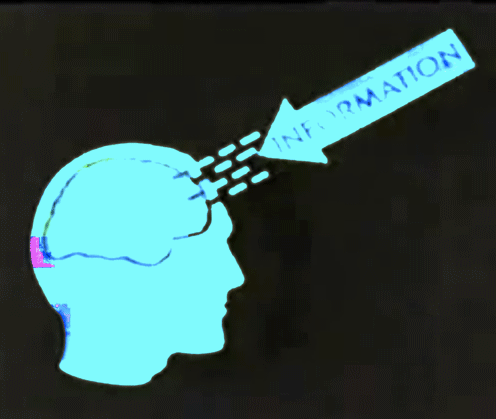Books on GIF #98 — 'Rage Becomes Her: The Power of Women's Anger' By Soraya Chemaly

Welcome to the latest edition of Books on GIF, the animated alternative to boring book reviews. This Sunday's selection is ‘Rage Becomes Her: The Power of Women’s Anger’ by Soraya Chemaly.

Late last year when I was plotting my newsletter schedule for early 2019, I had no idea that this review would run the same weekend as the Women’s March. The timing, as Bob Ross might say, is just a ‘happy accident.’ But I’m glad these things aligned, because this book (and I imagine others like it, Book Riot has a list) is an important contribution to this moment where women are taking to the streets, social media and writing to say:

Chemaly weaves personal stories, academic research, news headlines and other data into a tapestry of problems women of all races and classes face around the world, including domestic abuse, catcalling, sexual violence, salary gaps, body image problems, and medical and reproductive care issues, among others. It also delves into how girls are taught at an early age to silence and doubt themselves, and to repress their feelings of anger, often translating them into a different emotion like sadness. She packs a ton into this book, and reading it often felt like:

While I was reading ‘Rage Becomes Her,’ news and essays that popped into my Twitter feed reinforced the evidence and themes of the book. In Tennessee, the governor commuted the life sentence of Cyntoia Brown, a 30-year-old woman forced into prostitution as a teenager, who at the age of 16 killed a man who had picked her up for sex because she thought he was going to kill her. In Thailand, an 18-year-old Saudi Arabian woman named Rahaf Mohammed Alqunun barricaded herself in a Bangkok hotel room while seeking refugee status after fleeing what she said was an abusive family and threats to her life after she renounced Islam. She was eventually granted asylum in Canada. In The Paris Review, author R. O. Kwon published the harrowing piece, ‘On Being a Woman in America While Trying to Avoid Being Assaulted.’ In The New York Review of Books, author Sady Doyle wrote a powerful piece about anger called ‘A Kind of Forgiveness.’ Also during this time I came across this heartbreaking and terrifying article in The Wall Street Journal, ‘Women in Latin America Are Being Murdered at Record Rates.’ I’m sure there were many more that I missed. But all this was enough to make anyone go:

All of what I read came in handy when a female friend and I recently discussed something at her job that made her as angry as Kate Bush is with this upright bass:

Having Chemaly in my head helped me to affirm her anger, and to take care to listen and offer support. But what women are supposed to do with this anger is where Chemaly’s book left me wanting more. She devotes a single chapter to ‘A Rage of Your Own,’ and while it offers important guidance under such headings as ‘Develop Self-Awareness,’ ‘Be Brave’ and ‘Take (Deliberate) Care,’ I thought these subjects all deserved more than a few paragraphs. As my friend above has also said, anger can rot you from within if not properly expressed or channeled. Also, I thought there was a missed opportunity to include some tips on how men can be helpful in understanding and supporting women and their anger. I found myself taking Chemaly’s sentences and retooling them for me. For example, when she wrote that women should ‘[o]bserve in your speech how often you might be suppressing your words or demands,’ I told myself to observe in my speech how often I might be oppressive or dismissive with my words or demands. But is this the correct takeaway? Are there others I haven’t thought of? A few lines on that would have helped me, but I also realize that I am not the target audience for the book, nor is it Chemaly’s responsibility to bend her task to men’s needs. Her purpose is to keep up the momentum of #MeToo and inspire women to be:

Anyone who’s interested in women’s rights, gender equality and living in a more just society should read this book.
How it begins:
My parents’ 1965 wedding was a lavish affair that went on for more than twenty hours, with over five hundred guests in attendance. Photos show glamorous women in long evening gowns and smiling men in carefully tailored black tie standing, in glittering groups, around a cake that covered the expanse of a five-foot square table.
Among the most prized gifts my parents received that day was their wedding china. These white-and-gold plates were more than an expensive gesture: they were an important symbol of adulthood and their community’s and family’s approval of marriage in general and of this marriage in particular. For my mother, they represented a core aspect of her identity: that of being a woman, soon to be a mother, the nurturer of her family. Growing up, these look-but-don’t-touch dishes were at the top of a hierarchy of plates that my mother established. When my siblings and I were small, we used them only on the rarest and most special occasions and always with great care.
That’s why, one day when I was fifteen, I was dumbfounded to see my mother standing on the long veranda outside our kitchen, chucking one china plate after another as far and as hard as she could into the hot, humid air. Our kitchen was on the second floor of a house that sat perched at the top of a long, rolling hill. I watched each dish soar through the atmosphere, its weight generating a sharp, steady trajectory before shattering into pieces on the terrace far below.
While the image is vivid in my mind, I have no memory of any sound. What I remember most was that there was no noise at all as my mother methodically threw one, then another, then another, over and over until her hands were finally free. She didn’t utter a sound the entire time. I have no idea if she even knew anyone was watching. When she was done, she walked back into the kitchen and asked me how my school day had gone, as though nothing out of the ordinary had happened. I desperately wanted to know what I had witnessed, but it didn’t feel like a good time to ask questions, so I sat and worked on my homework as my mother prepared dinner and the day morphed into night. We never talked about anger.
My rating:

‘Rage Becomes Her: The Power of Women’s Anger’ by Soraya Chemaly was published by Atria Books in 2018. 392 pages, including notes and index. I received a copy from the publisher.
In case you missed it: Books on GIF #97 featured ‘The Final Days’ by Bob Woodward and Carl Bernstein.
What’s next: In two weeks you’ll get a review of ‘Unclaimed Baggage’ by Jen Doll. Also in the queue are ‘No Matter How Much You Promise to Cook or Pay the Rent You Blew It Cauze Bill Bailey Ain’t Never Coming Home Again’ by Edgardo Vega Yunqué, ‘Asymmetry’ by Lisa Halliday and ‘Thin Rising Vapors’ by Seth Rogoff, among others.
Shoot me an email if there’s a bestseller, a classic or a forgotten gem you want me to review.
Follow me on Twitter and Instagram.
Thanks for reading, and thanks especially to Donna for editing this review!
Until next time,

MPV



